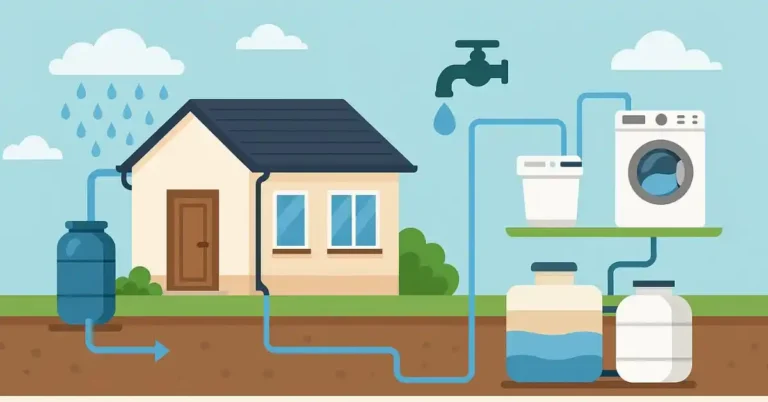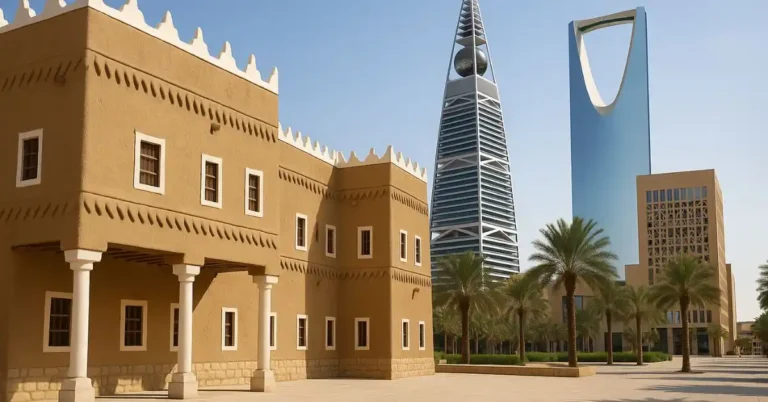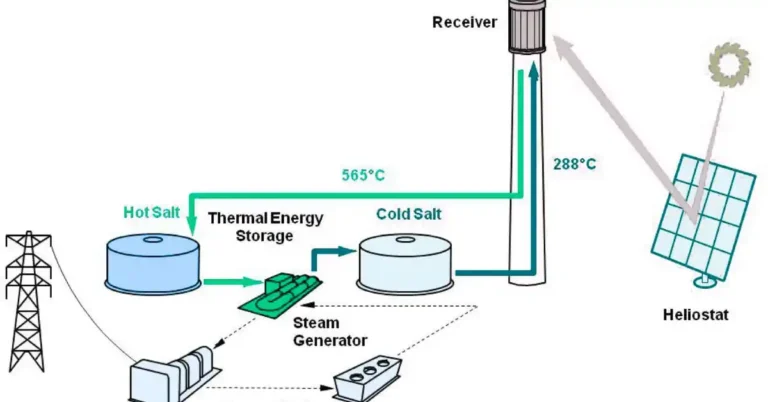Geothermal Energy Potential in Saudi Arabia
As the Kingdom advances its ambitious Vision 2030 plan, geothermal energy potential emerges as a promising yet underexplored renewable resource with significant potential to reshape the nation’s energy portfolio.
Saudi Arabia, a nation synonymous with vast oil reserves and petroleum production, is embarking on a transformative journey toward renewable energy diversification.
This clean, sustainable energy source harnesses the natural heat from beneath the Earth’s surface, offering a reliable baseload power alternative that aligns perfectly with Saudi Arabia’s commitment to reducing carbon emissions and diversifying its economy beyond fossil fuels.
The geological conditions across Saudi Arabia, particularly along the western Red Sea coast, present favorable characteristics for geothermal energy development.
With over 2,500 dormant volcanoes and numerous hot springs reaching temperatures of up to 80°C, the Kingdom possesses natural assets that could be leveraged to generate electricity, provide district heating and cooling, support water desalination efforts, and contribute to various industrial processes.
This comprehensive exploration of Saudi Arabia’s geothermal potential examines the current state of development, regional opportunities, technological considerations, economic benefits, and the crucial role this renewable energy source could play in achieving the Kingdom’s nationally determined contribution targets under the Paris Agreement.
Saudi Arabia’s Current Energy Landscape and Vision 2030
Saudi Arabia’s energy sector has historically been dominated by fossil fuels, with the nation burning more oil for power generation than any other country globally. According to the U.S. Energy Information Administration, in 2022, Saudi Arabia’s electricity generation mix consisted of approximately 60% natural gas and 40% oil, with renewables accounting for a mere 0.3% of the total generation capacity.
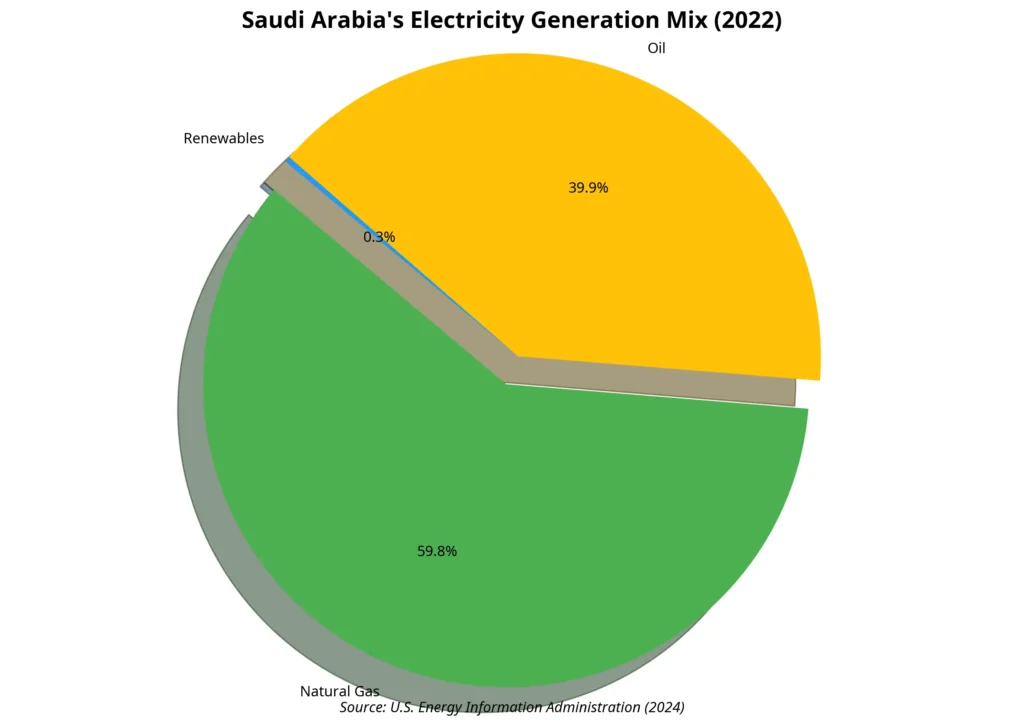
This heavy reliance on hydrocarbons has served the Kingdom well economically but presents challenges in an increasingly carbon-conscious global environment.
Recognizing this reality, Saudi Arabia has established ambitious renewable energy targets as part of its Vision 2030 strategic framework, aiming to generate 50% of its electricity from renewable sources by 2030.
This would represent a significant shift from the current energy mix and would displace approximately 1 million barrels of liquid fuels per day currently used for power generation.
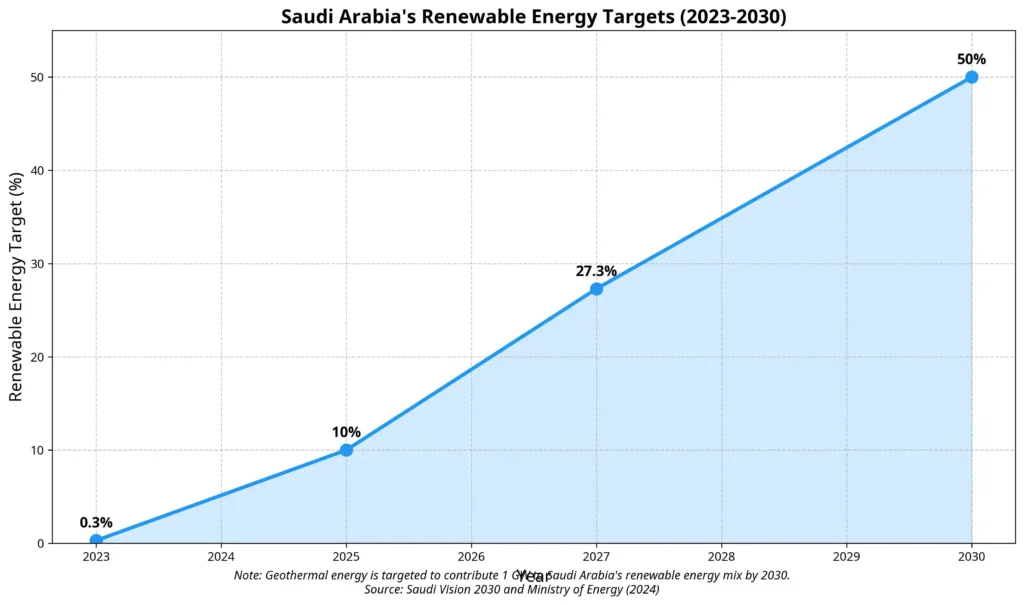
The Kingdom’s renewable energy strategy has primarily focused on solar and wind power, given the abundant sunshine and favorable wind conditions in certain regions.
However, geothermal energy has recently gained attention as a valuable addition to the renewable portfolio, with TAQA Geothermal a joint venture between Saudi TAQA and Iceland’s Reykjavik Geothermal aiming to develop at least 1 gigawatt (GW) of geothermal electricity capacity in the foreseeable future.
Geological Foundations: Why Saudi Arabia is Suitable for Geothermal Energy Potential
Saudi Arabia’s geothermal potential is primarily concentrated in the western region along the Red Sea rift basin, where geological conditions create an environment conducive to geothermal resource development. The “Harrat” volcanic field, comprising over 2,500 dormant volcanoes and numerous hot springs, represents one of the most promising areas for geothermal exploration and development.
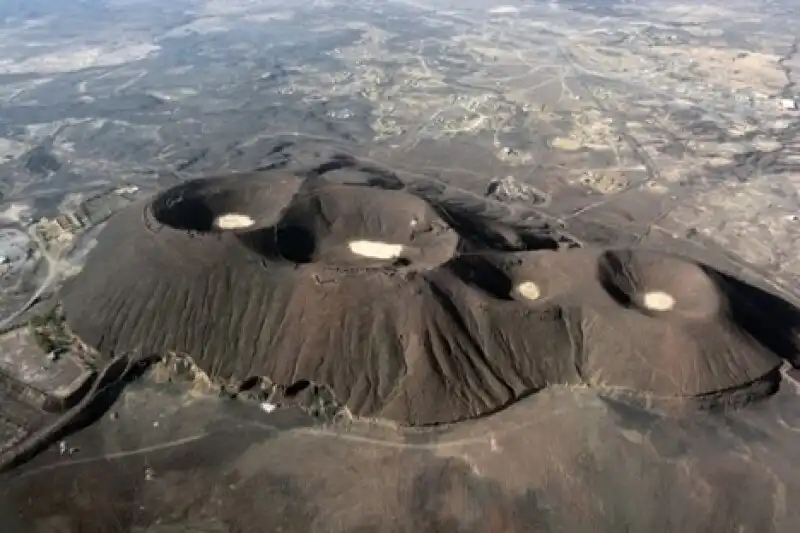
The Kingdom’s geothermal resources can be categorized into several types:
- Hydrothermal Systems: These are naturally occurring reservoirs of hot water or steam found in permeable rock formations, primarily along the Red Sea coast.
- Enhanced Geothermal Systems (EGS): These involve creating artificial reservoirs by injecting water into hot, dry rock formations to produce steam for power generation.
- Direct Use Applications: These utilize lower-temperature geothermal resources for heating, cooling, and various industrial processes without electricity generation.
Early geological studies indicate varying temperature gradients across different regions of Saudi Arabia, with the Jizan area in the south showing exceptionally high gradients. Research conducted by King Abdullah University of Science and Technology (KAUST) has identified several promising locations for geothermal development, including:
- Al-Lith region
- Areas near KAUST
- The Red Sea Development Project near Al-Wajh
- NEOM mega-project area

The eastern part of Saudi Arabia, known as the Arabian Platform, consists primarily of sedimentary formations containing the nation’s hydrocarbon resources.
While this region is less favorable for traditional geothermal development, some oil and gas wells in the area have tapped into temperatures sufficient for various geothermal applications, presenting opportunities for synergies between the petroleum and geothermal sectors.
Mapping Saudi Arabia’s Geothermal Hotspots
The geothermal energy potential across Saudi Arabia varies significantly by region, with the western areas showing the greatest promise. A comprehensive map of the Kingdom’s geothermal resources reveals several key hotspots:
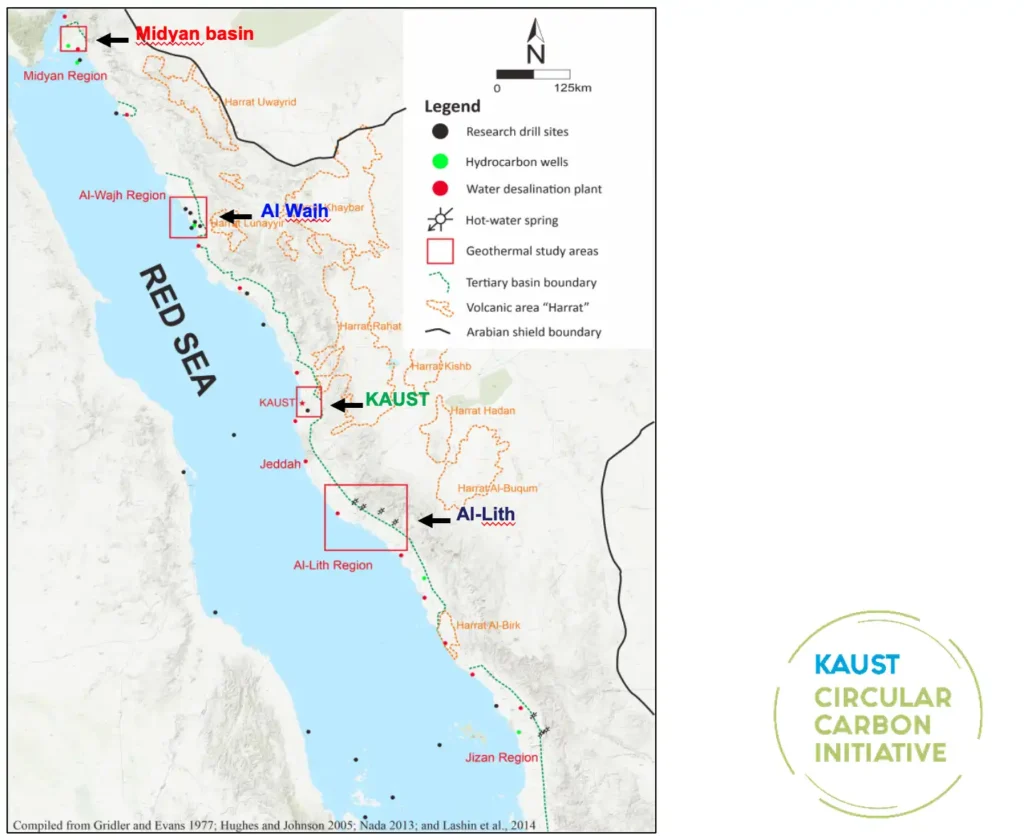
- Western Region (Red Sea Coast): This area demonstrates the highest geothermal potential due to its location along the Red Sea rift, where tectonic activity has created favorable conditions for geothermal resource development. The region features numerous hot springs and volcanic formations that indicate substantial underground heat resources.
- Jizan Area: Located in the southwestern part of Saudi Arabia, the Jizan region shows exceptionally high temperature gradients, making it particularly suitable for geothermal power generation. Early studies suggest this area could host some of the most productive geothermal reservoirs in the Kingdom.
- NEOM: This planned cross-border city in the Tabuk Province of northwestern Saudi Arabia has been identified as having significant geothermal potential. Research by King Abdulaziz University has generated Curie temperature gradient maps indicating shallow Curie depths near the Gulf of Aqaba, recognized as a promising source of renewable geothermal energy.
- Al-Lith: This coastal city south of Jeddah has been targeted by KAUST researchers as a promising location for geothermal development, with syn-rift sedimentary basins that could host substantial geothermal resources.
- Eastern Region: While less favorable than the western areas, the eastern region offers opportunities for utilizing geothermal heat from existing oil and gas wells, potentially enabling combined hydrocarbon recovery and geothermal energy production.
The Saudi Geological Society (SGS) has entered into a Memorandum of Understanding with the Saudi Ministry of Energy to commence more detailed exploration of these geothermal resources, which will provide a more comprehensive understanding of the Kingdom’s geothermal potential in the coming years.
Current Geothermal Projects and Initiatives in Saudi Arabia
Despite the promising geological conditions, geothermal energy potential in Saudi Arabia remains in its early stages. However, several key projects and initiatives are currently underway:
- KAUST Exploratory Well: In early 2024, King Abdullah University of Science and Technology (KAUST) broke ground on a pilot project in partnership with TAQA Geothermal. This initiative involves a relatively shallow (400 meters depth) geothermal well designed for reconnaissance, monitoring, and testing of new technologies. Led by KAUST Research Professor Thomas Finkbeiner, this project represents a significant step forward in practical geothermal exploration in the Kingdom.
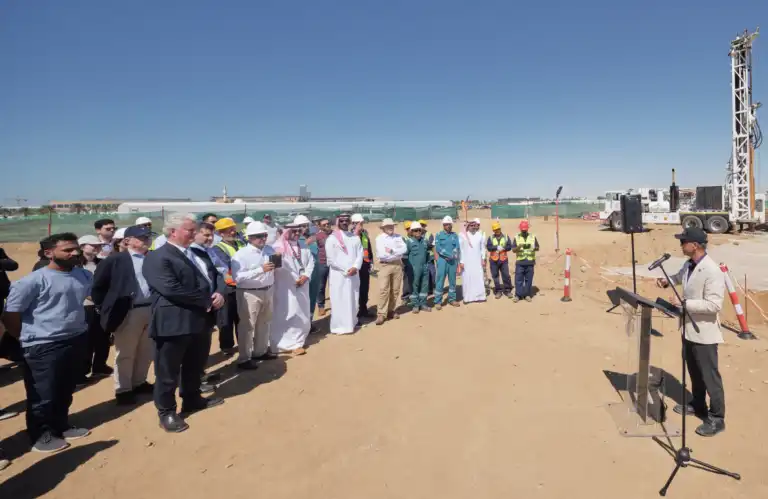
- TAQA Geothermal Development Plans: TAQA, a Saudi oilfield service company, has formed a joint venture with Iceland’s Reykjavik Geothermal to create TAQA Geothermal. This collaboration aims to develop at least 1 GW of geothermal electricity capacity or its equivalent in the foreseeable future, representing a substantial commitment to geothermal energy in the Kingdom.
- Saudi Geological Society and Ministry of Energy Exploration: The SGS and Ministry of Energy partnership focuses on comprehensive exploration of geothermal resources throughout Saudi Arabia, laying the groundwork for future development projects.
- King Abdulaziz University Research in NEOM: Researchers have conducted studies in the NEOM area, generating Curie temperature gradient maps that confirm the availability of ground heat suitable for geothermal energy generation. These findings support the integration of geothermal energy potential into the ambitious NEOM project’s sustainable energy plans.
- KAUST Red Sea Research: KAUST has been investigating geothermal energy potential along the Red Sea, targeting various syn-rift sedimentary basins. Their research evaluates the potential for low-to-medium geothermal energy extraction and utilization for heating, cooling, water desalination, and power generation.
While these projects represent important first steps, Saudi Arabia’s geothermal energy potential sector remains less developed than other renewable energy technologies in the Kingdom. Limited public awareness of geothermal benefits and insufficient public data have hindered robust assessment of the full geothermal energy potential.
However, the involvement of Saudi Aramco which possesses extensive knowledge of the Kingdom’s geology from decades of oil and natural gas exploration could accelerate geothermal development significantly.
Technological Options for Geothermal Development in Saudi Arabia
Various geothermal technologies could be deployed in Saudi Arabia, each with different suitability levels based on local geological conditions, implementation costs, and technological readiness:
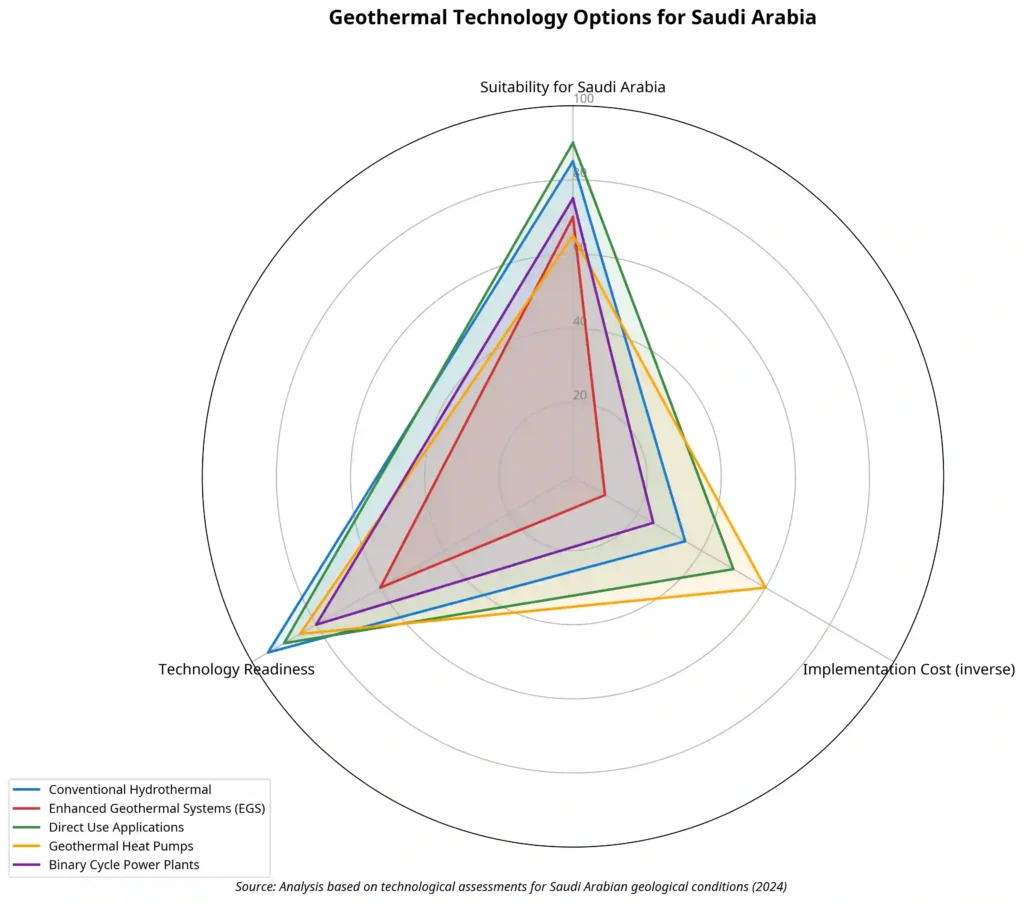
- Conventional Hydrothermal Systems: These systems utilize naturally occurring hot water or steam reservoirs and are most suitable for the western regions of Saudi Arabia where natural geothermal resources are abundant. With high technological readiness and moderate implementation costs, these systems represent the most immediately viable option for the Kingdom.
- Enhanced Geothermal Systems (EGS): EGS technology creates artificial geothermal reservoirs by injecting water into hot, dry rock formations. While this approach could expand geothermal potential beyond natural hydrothermal areas, it involves higher implementation costs and lower technological readiness, making it a medium-term option for Saudi Arabia.
- Direct Use Applications: These systems utilize lower-temperature geothermal resources for heating, cooling, and industrial processes without electricity generation. With high suitability for Saudi Arabia’s climate conditions, low implementation costs, and high technological readiness, direct use applications offer immediate opportunities, particularly for district cooling systems.
- Geothermal Heat Pumps: These systems use the relatively constant temperature of the shallow subsurface for heating and cooling buildings. While highly efficient and technologically mature, their application in Saudi Arabia would primarily focus on cooling rather than heating, given the Kingdom’s climate.
- Binary Cycle Power Plants: These plants use moderate-temperature water to heat a secondary fluid with a lower boiling point, which vaporizes to drive a turbine. This technology is well-suited for many of Saudi Arabia’s geothermal resources that may not reach the high temperatures required for conventional steam turbines.
The selection of appropriate technologies will depend on specific site conditions, resource temperatures, and intended applications. For Saudi Arabia, a combination of these technologies will likely be necessary to maximize the utilization of its diverse geothermal resources.
Potential Applications of Geothermal Energy Potential in Saudi Arabia
Geothermal energy potential offers multiple applications beyond electricity generation, many of which are particularly relevant to Saudi Arabia’s specific needs and challenges:
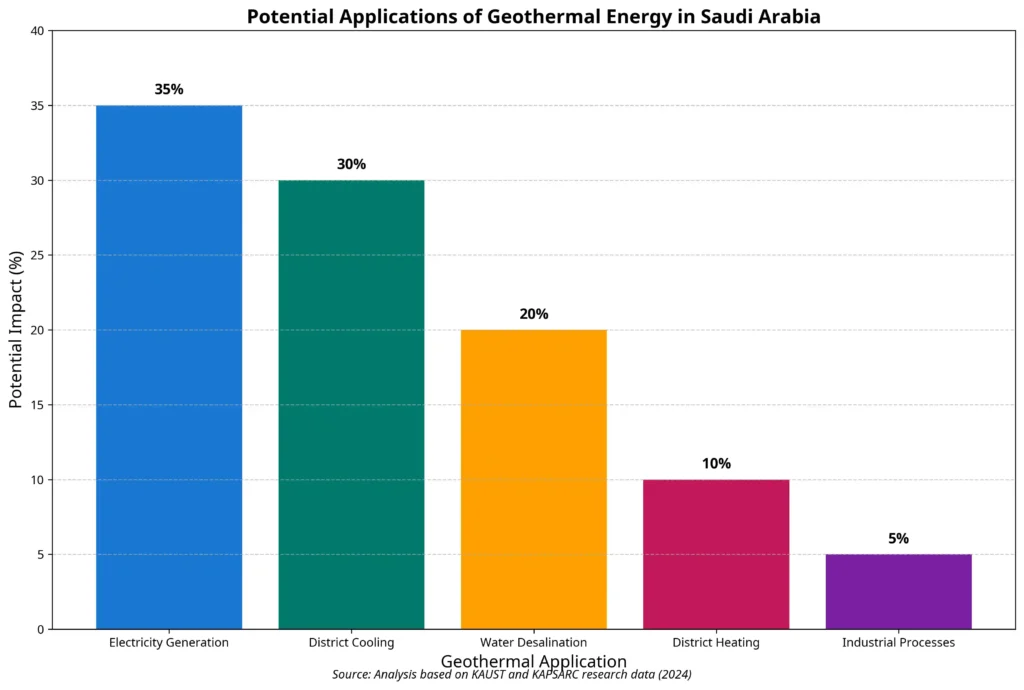
- Electricity Generation: Geothermal power plants can provide baseload electricity, complementing intermittent renewable sources like solar and wind. With Saudi Arabia’s goal of generating 50% of its electricity from renewables by 2030, geothermal could contribute significantly to this target while providing grid stability.
- District Cooling: Cooling accounts for approximately 70% of peak electricity demand in Saudi Arabia during summer months. Geothermal-powered absorption cooling systems, similar to those already operational in Abu Dhabi, could substantially reduce electricity consumption for air conditioning. Studies show that cooling consumes 101 TWh of electricity in residences and 70 TWh in commercial establishments annually in Saudi Arabia.
- Water Desalination: As the world’s largest desalination market, Saudi Arabia could benefit from geothermal-powered desalination plants. Geothermal energy can supply both heat and power for this energy-intensive process, reducing reliance on fossil fuels while addressing critical freshwater needs.
- District Heating: Although heating requirements are limited in most of Saudi Arabia, certain industrial processes and applications in cooler mountainous regions could benefit from geothermal district heating systems.
- Industrial Processes: Geothermal heat could support various industrial applications, including food processing, agricultural drying, and certain manufacturing processes, contributing to industrial decarbonization efforts.
The integration of geothermal energy potential into these applications would not only diversify Saudi Arabia’s energy mix but also contribute significantly to reducing carbon emissions and optimizing resource utilization across multiple sectors.
Economic and Environmental Benefits of Geothermal Energy Potential for Saudi Arabia
The development of geothermal energy potential in Saudi Arabia offers substantial economic and environmental benefits that align with the Kingdom’s Vision 2030 goals:
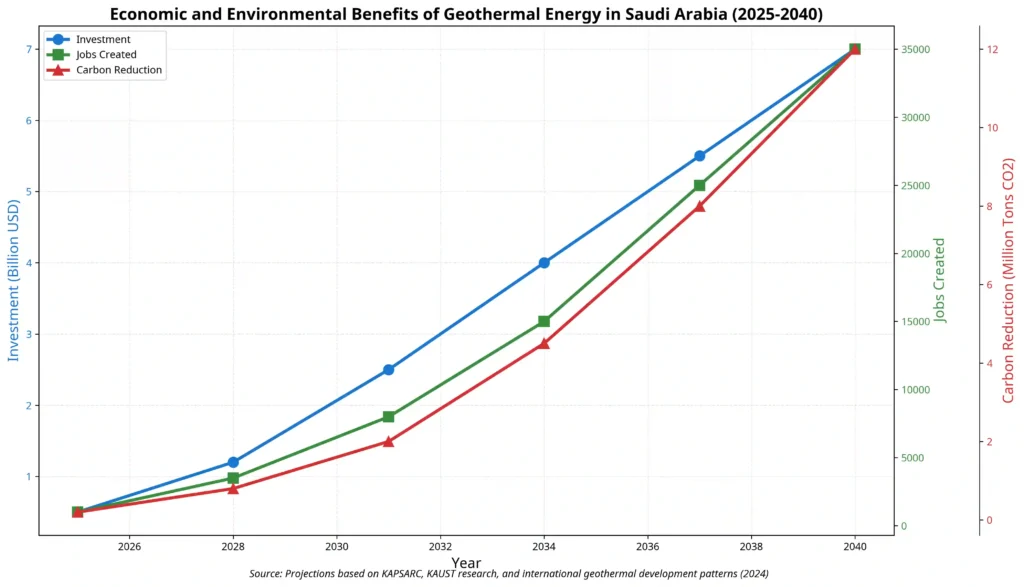
Economic Benefits:
- Reduced Domestic Oil Consumption: By displacing oil currently used for power generation, geothermal energy potential could free up more petroleum for export, potentially increasing national revenue.
- Job Creation: The geothermal sector could create thousands of direct and indirect jobs across the value chain, from exploration and drilling to plant operation and maintenance. Projections suggest up to 35,000 jobs could be created by 2040 if geothermal development targets are met.
- Energy Subsidy Optimization: Energy in Saudi Arabia is heavily subsidized by the government. As population and industrial growth drive higher energy demand, these subsidies increase accordingly. Geothermal energy potential offers a path to optimize the energy sector and reduce subsidy burdens over time.
- Industrial Diversification: Developing a domestic geothermal industry supports Saudi Arabia’s goals of economic diversification beyond petroleum, creating new industrial capabilities and potential export of expertise to other countries in the region.
- Investment Opportunities: The geothermal sector could attract significant investment, with projections indicating potential investment growth from $0.5 billion in 2025 to $7 billion by 2040.
Environmental Benefits:
- Carbon Emission Reduction: Geothermal power plants emit minimal greenhouse gases compared to fossil fuel alternatives, helping Saudi Arabia meet its nationally determined contribution targets under the Paris Agreement. By 2040, geothermal energy potential could contribute to reducing carbon emissions by approximately 12 million tons of CO2 annually.
- Water Conservation: Unlike many thermal power plants, geothermal facilities require minimal water for cooling, an important consideration in water-scarce Saudi Arabia.
- Land Use Efficiency: Geothermal power plants have a small land footprint compared to other renewable energy sources like solar and wind farms, preserving valuable land resources.
- Air Quality Improvement: Reduced fossil fuel combustion for electricity generation would improve local air quality, benefiting public health in urban areas.
- Sustainable Development: As a renewable resource, geothermal energy potential supports long-term sustainable development goals without depleting natural resources.
These economic and environmental benefits make geothermal energy potential an attractive component of Saudi Arabia’s energy transition strategy, offering advantages that extend well beyond simple power generation.
Comparing Geothermal Energy Potential with Other Energy Sources in Saudi Arabia
When evaluating renewable energy options for Saudi Arabia, geothermal energy potential offers distinct advantages and challenges compared to other renewable sources:
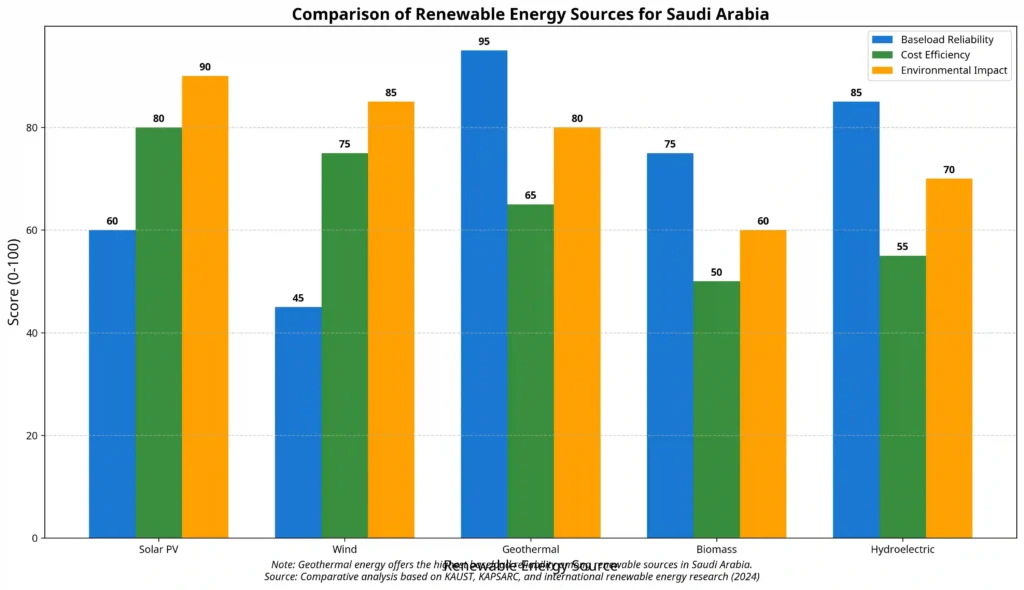
Baseload Reliability:
Geothermal energy potential excels in providing consistent, baseload power generation, operating at capacity factors of 90-95% regardless of weather conditions or time of day.
This contrasts sharply with solar (20-30% capacity factor in Saudi Arabia) and wind (30-45% capacity factor), which are intermittent by nature. For a nation transitioning from reliable fossil fuel generation, geothermal’s baseload capability represents a significant advantage.
Cost Efficiency:
While solar PV has become highly cost-competitive in Saudi Arabia due to excellent solar resources and declining technology costs, geothermal energy remains moderately cost-effective, particularly when considering its reliability and longevity.
Initial capital costs for geothermal are higher than solar but lower than nuclear, with very low operational costs over the plant’s lifetime (typically 30+ years).
Environmental Impact:
All renewable energy sources offer substantial environmental benefits compared to fossil fuels, but each has different impacts. Geothermal energy potential has a minimal land footprint compared to solar and wind farms, produces almost no emissions during operation, and has limited visual impact on landscapes.
However, careful management is required to prevent potential issues with water use and mineral scaling in certain geothermal applications.
Resource Availability:
While solar resources are abundant throughout Saudi Arabia and wind resources are good in specific regions, geothermal resources are geographically limited to certain areas, primarily along the western coast. This geographical constraint means geothermal will likely remain a smaller but valuable component of the Kingdom’s overall renewable energy portfolio.
Technology Maturity:
Geothermal power generation is a mature technology globally, with plants operating reliably for decades in countries like the United States, Iceland, Italy, and New Zealand.
However, the specific geological conditions in Saudi Arabia may require adaptation of existing technologies and development of new approaches tailored to local conditions.
This comparative analysis suggests that geothermal energy should be viewed as a complementary component within a diverse renewable energy portfolio rather than a standalone solution.
Its unique ability to provide reliable baseload power makes it particularly valuable for balancing the intermittency of solar and wind resources, which will likely constitute the majority of Saudi Arabia’s renewable capacity.
Challenges and Opportunities for Geothermal Development in Saudi Arabia
The path to significant geothermal development in Saudi Arabia presents both substantial challenges and promising opportunities:
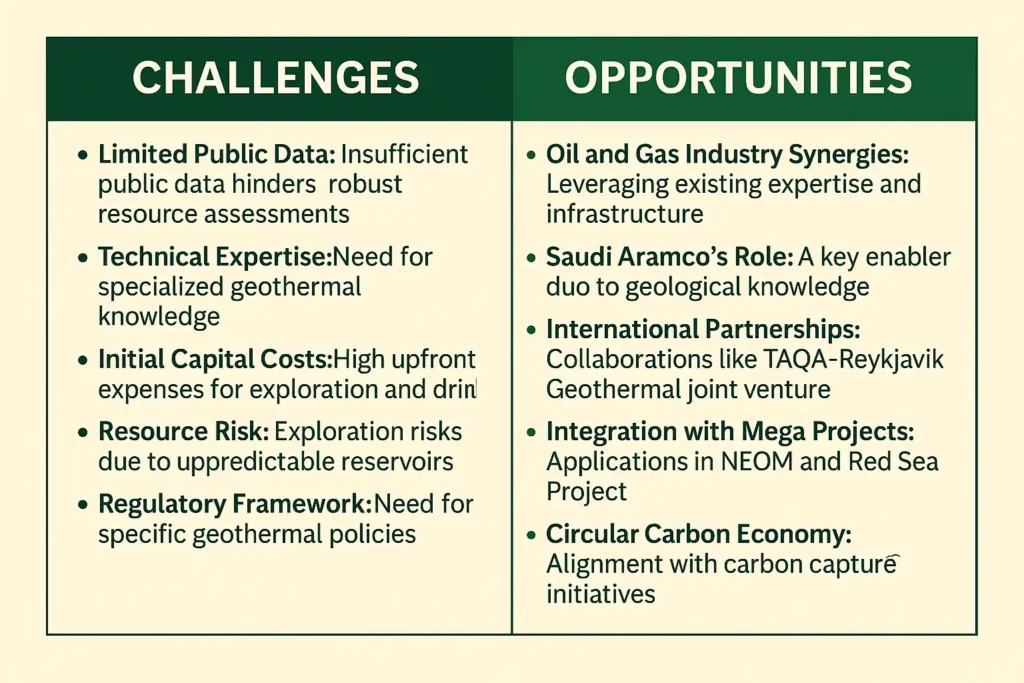
By addressing these challenges and capitalizing on the opportunities, Saudi Arabia could establish itself as a regional leader in geothermal energy development, creating a model for other Middle Eastern countries with similar geological conditions.
The Role of Geothermal in Achieving Saudi Arabia’s Climate Commitments
Saudi Arabia’s nationally determined contribution (NDC) under the Paris Agreement commits to reducing greenhouse gas emissions by 278 million tonnes by 2030. Geothermal energy potential can play a significant role in achieving this target through several mechanisms:
- Direct Displacement of Fossil Fuels: Each megawatt-hour of electricity generated from geothermal sources directly replaces electricity that would otherwise be produced by burning oil or natural gas, reducing carbon emissions by approximately 0.5-0.7 tonnes of CO2 per MWh compared to oil-fired generation.
- Support for Intermittent Renewables: By providing reliable baseload power, geothermal energy enables greater integration of intermittent renewable sources like solar and wind, indirectly supporting further emissions reductions.
- Reduced Cooling-Related Emissions: Geothermal-powered cooling systems can significantly reduce electricity demand for air conditioning, which accounts for up to 70% of peak electricity consumption during summer months.
- Decarbonization of Industrial Processes: Direct use of geothermal heat for industrial applications can replace fossil fuels currently used for process heating, further reducing emissions.
- Sustainable Desalination: Geothermal-powered desalination reduces the carbon footprint of freshwater production, addressing both water security and climate goals simultaneously.
The development of 1 GW of geothermal capacity, as targeted by TAQA Geothermal, could contribute approximately 7-8 million tonnes of CO2 reduction annually when accounting for both direct and indirect benefits. This represents a meaningful contribution to Saudi Arabia’s overall NDC target and demonstrates the Kingdom’s commitment to diversifying its approach to emissions reduction beyond simply focusing on solar and wind power.
Future Outlook and Recommendations for Geothermal Energy Potential in Saudi Arabia
The future of geothermal energy potential in Saudi Arabia appears promising, though realizing its full potential will require coordinated efforts across multiple fronts:
Short-term Recommendations (1-3 years):
- Comprehensive Resource Assessment: Conduct detailed geological surveys and exploration drilling in high-potential areas to better quantify the Kingdom’s geothermal resources.
- Regulatory Framework Development: Establish clear regulations, permitting processes, and incentives specifically for geothermal energy development.
- Pilot Project Expansion: Build upon the KAUST exploratory well initiative to develop multiple pilot projects demonstrating different geothermal technologies and applications.
- Capacity Building: Invest in education and training programs to develop local expertise in geothermal exploration, development, and operations.
Medium-term Recommendations (3-7 years):
- Commercial-Scale Development: Transition from pilot projects to commercial-scale geothermal power plants in the most promising locations, particularly along the Red Sea coast.
- Integration with Desalination: Develop integrated geothermal-desalination facilities to demonstrate the technology’s potential for water security applications.
- District Cooling Implementation: Establish geothermal district cooling systems in major urban developments, particularly new cities and projects like NEOM.
- Technology Adaptation: Invest in research and development to adapt geothermal technologies to Saudi Arabia’s specific geological conditions and climate challenges.
Long-term Vision (7+ years):
- Geothermal Industrial Clusters: Develop industrial zones powered by geothermal energy potential, attracting industries that benefit from reliable, low-carbon energy and potential direct use of geothermal heat.
- Regional Leadership: Position Saudi Arabia as a center of excellence for geothermal development in arid regions, exporting expertise and technology throughout the Middle East and North Africa.
- Advanced Geothermal Systems: Explore next-generation technologies like enhanced geothermal systems (EGS) and superhot rock geothermal to access deeper, more widespread resources.
- Fully Integrated Energy System: Create a fully integrated energy system where geothermal provides baseload power and stability services to complement the Kingdom’s substantial solar and wind capacity.
By following this phased approach, Saudi Arabia can systematically develop its geothermal energy potential resources while building the necessary infrastructure, expertise, and regulatory frameworks to support long-term growth of the sector.
Conclusion:
Geothermal energy potential represents a significant yet largely untapped opportunity for Saudi Arabia as it pursues its ambitious Vision 2030 goals and climate commitments.
The Kingdom’s favorable geological conditions, particularly along the Red Sea coast, provide a natural foundation for geothermal development that could complement the more widely publicized solar and wind initiatives.
While geothermal energy potential is unlikely to match solar power in terms of overall capacity in Saudi Arabia, its unique advantages particularly its ability to provide reliable baseload power and its applications beyond electricity generation make it an invaluable component of a diversified renewable energy portfolio.
The synergies between geothermal development and Saudi Arabia’s existing oil and gas expertise further enhance its attractiveness as a strategic energy option.
The early initiatives by KAUST, TAQA Geothermal, and other stakeholders demonstrate growing recognition of geothermal energy’s potential. However, realizing this potential will require sustained commitment, investment in exploration and technology development, creation of supportive regulatory frameworks, and building of local expertise.
As Saudi Arabia continues its journey toward energy diversification and decarbonization, geothermal energy offers a path that builds on the Kingdom’s geological advantages and technical capabilities while addressing its unique energy challenges.
By embracing geothermal alongside other renewable sources, Saudi Arabia can create a more resilient, sustainable energy system that supports economic growth while reducing environmental impact truly embodying the principles of its Vision 2030 plan and circular carbon economy program.
The heat beneath Saudi Arabia’s desert sands may well prove to be one of its most valuable resources in the coming decades, powering not just electricity generation but a broader transformation of how the Kingdom produces and consumes energy across all sectors of its economy.
